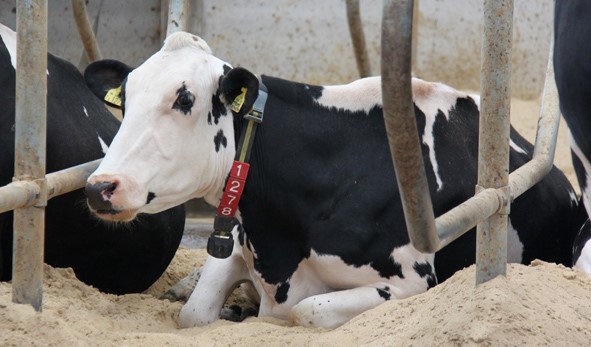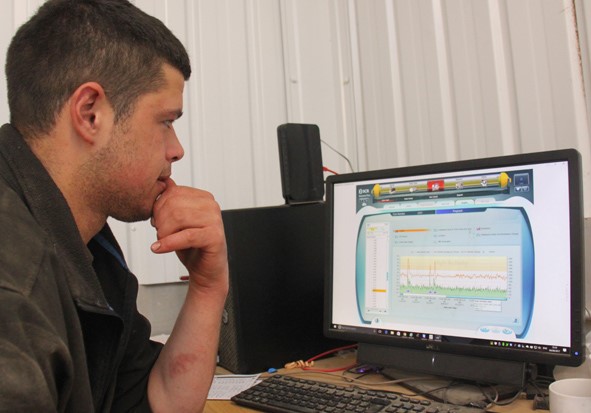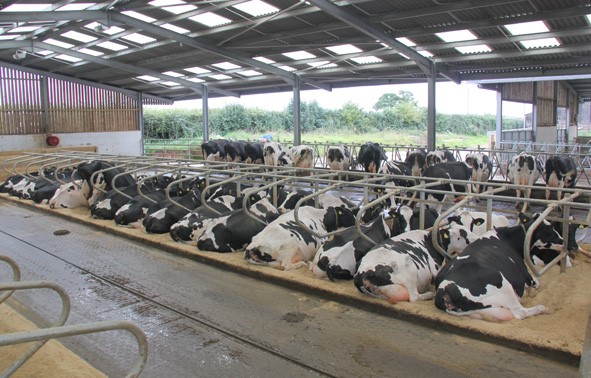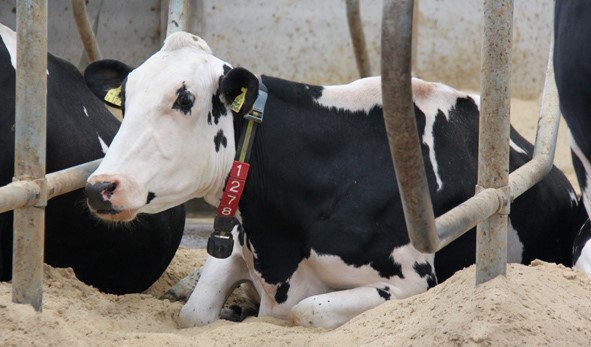
Rumination Monitoring Improves Cow Performance on Devon Dairy Farm
For Olly Reed, maintaining a calving interval of 370 days from a herd averaging 10,000 litres is aided by the ability to closely scrutinise each cow’s rumination and fertility status and react promptly to any signs of ill health or undue stress.
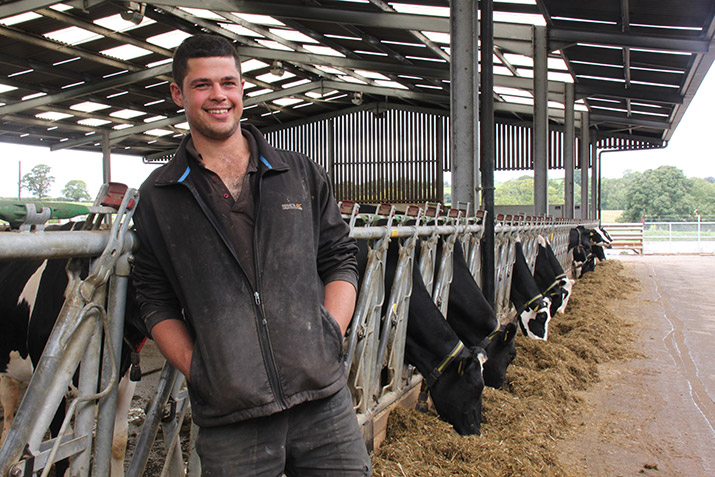
Olly farms with his parents, Andrew and Wendy, at France Farm, Cullompton, Devon where they have recently constructed a greenfield dairy unit with 160 cows housed all year round and milked by three Lely robots. Monitoring rumination and activity via Allflex HeatTime collars Olly has increased cow longevity and reduced potential financial losses associated with mastitis, lameness as well as other sub-clinical ailments which impact on fertility and overall herd productivity. “Only cows not in calf were fitted with a collar,” Olly explains. “As soon as each cow was back in calf, the collar would be taken off and put onto the next dry cow. It was a system which worked well helping us to observe quiet and silent heats, but we couldn’t build up a complete picture of each cows performance through her subsequent pregnancy and lactation.”
A comprehensive farm modernisation programme was completed. “The aim was to modernise the farm’s housing and milking facilities and to make the entire system easier to manage,” Olly continues. At the same time as installing three new robot milking systems Olly also upgraded the herd’s heat detection collars. “We’re now using the HeatTime system from Allflex which detects subtle movements associated with rumination and heat activity. The tag relays this information back to a computer which converts the data to calculate various health parameters and heat predictions.
Olly’s system maintains round-the-clock contact with all the farm’s dairy livestock, including dry cows at pasture and bulling heifers which are housed on a separate property 500 metres away from the main unit.
“It’s a really powerful system and one which fits perfectly with our robotic system,” Olly explains. “My first job each morning is to interrogate the latest health and heat reports on my phone and to assess which, if any, cows need medical attention or are ready to be served. If any cows have moved out of their ‘normal’ rumination or activity parameters, I’ll receive an automatic alert so that I can take the appropriate action.”
“We now have a better understanding of each cow’s health, heat and stress parameters and can act preemptively to combat problems such as lameness, mastitis and poor fertility,” Olly continues. “We’re currently detecting 70-80% of heats which has enabled us to tighten our calving interval to 370 days. The robots, together with the rumination and activity monitoring collars, make it easier for Olly and his small team to manage the herd very efficiently. “We’re able to easily observe each cow much more closely than before and can react to the subtlest of signals as soon as they are detected. We can even tell if we’ve fed a poor batch of silage as the whole herd will exhibit lower rumination activity. We can then take the appropriate steps to rectify the diet quickly and with minimal impact on milk yield or quality.
Although his herd’s production and fertility figures are good, Olly isn’t content to sit back and relax. “I’m always looking for ways to tweak the system and make more proactive management decisions. One of my biggest challenges is spotting completely silent heats.
“No system is completely infallible so we’re still missing heats for approximately 10-20% of the herd. These are usually the really high yielders giving in excess of 60 litres per day, that don’t show any sign. It’s asking a lot for those cows to cycle predictably, but the more information we have at our finger tips, the more likely we are to be able to make improvements and to treat anoestrus cows effectively.
“The systems we have in place are already helping us to react more quickly to each cow’s individual needs and to prevent minor health issues escalating into bigger problems. That has helped to increase productivity and extend cow longevity which in turn makes the entire dairy enterprise easier to manage and more profitable.”
Interested in seeing what livestock monitoring can do for you? Fill out the form below for someone in your area to contact you.
